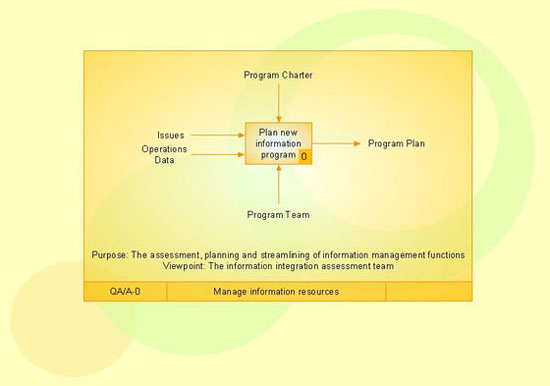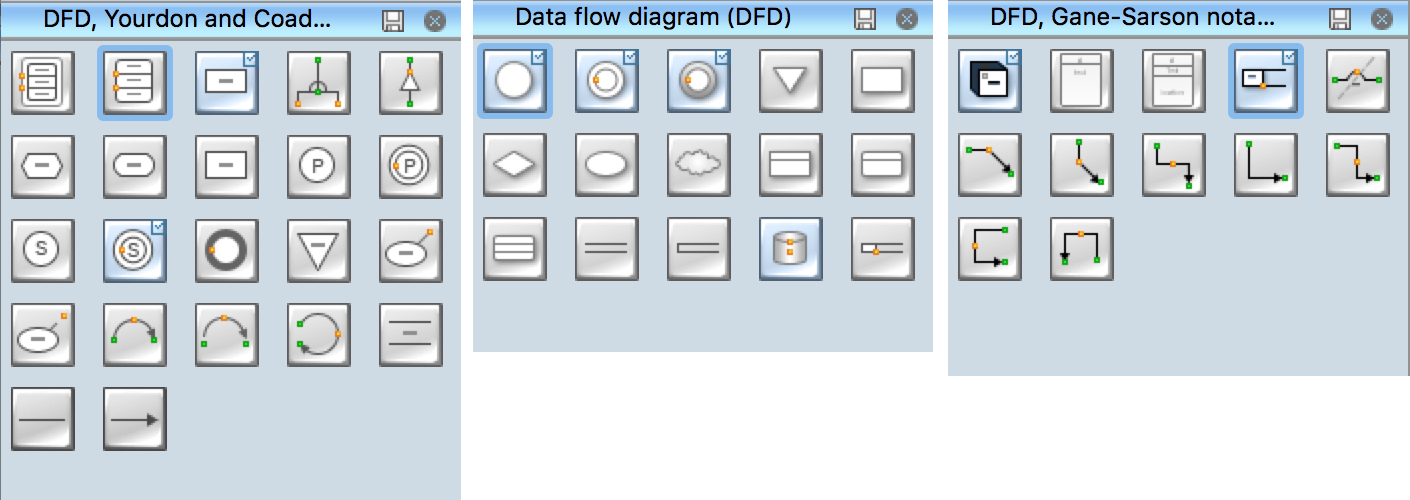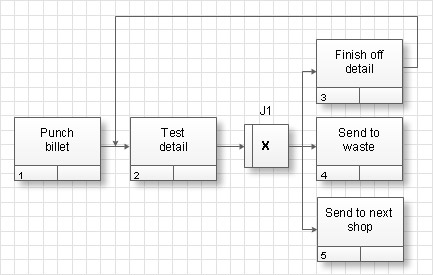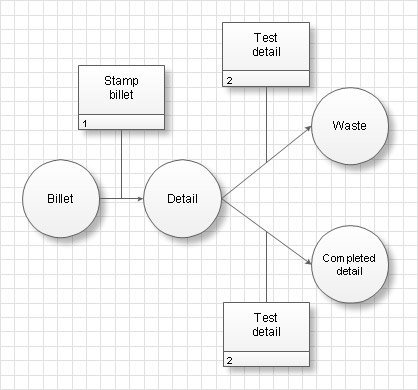IDEF3 Standard
|
In contrast to IDEF0 standard, IDEF3 standard is more particularly specialized. This standard is intended for description and further analysis of technological processes of an enterprise. Using IDEF3 standard it is possible to examine and model scenarios of technological processes. Scenario is a description of consecution of properties changes of an object which takes part in the technological process, e.g. half-finished product which is under processing. Each scenario is documented correspondingly. For documenting of the scenario there are two types of documents: documents, which describe properties and consecution of the process execution (standards, methods and technologies description) and documents, which describe results of the process execution (reports and work statistics). IDEF3 standard allows to get information about process and attendant documentation and to analyze it for increasing of the process management effectiveness. Using IDEF3 standard you can collect and document information about processes key points, define the degree of influence on the course of processes execution and model scenarios without change of the production process itself. There are two types of diagrams in IDEF3 standard. These diagrams describe the same technological process from different sides. First type of diagram is Process Flow Description Diagrams (PFDD). The second type - Object State Transition Network (OSTN) diagrams. For instance if it is necessary to describe the process of stamping the detail from a billet, the PFDD diagram will contain a description of consecution of actions which are executed with the billet during the given process, and the OSTN diagram will contain the detail states on each process stage.
Rectangular blocks on the diagram are called functional units or Units of Behavior (UOB). Each UOB has the name in the verb form and a unique number and denotes an event within the limits of the process (a stage, an action or decision making). UOB are connected by arrows in consecution of the process execution. There are 3 different kinds of arrows: Precedence arrow - a solid line, which is drawn from left to right or top-down; Relational Link - a dotted line, used for description of relations between UOB; Object Flow - an arrow with two arrow-heads. Such arrow denotes that the object is used in two or more subruns. For example, when the object is created in one subrun and is used in another one. The block marked with the cross on the diagram is called a Junction. Such blocks are used for indication of decision makings during the process. Accordingly to IDEF3 standard there are two types of Junctions: for confluence (Fan-in Junction) and branching (Fan-out Junction) of arrows. Simultaneous junction and branching is not allowed. Junctions can be of different types. The junction type is denoted on the diagram.
All junctions in PFDD are numerated, each number has prefix "J", e.g. J1, J2 and so on. Each UOB can be represented in the form of sequence of blocks with the necessary degree of detailed elaboration. For example the block “Testing of a detail” can be represented in the form of sequence of blocks, which in their turn will form PFDD diagram. Such diagram will be called a Child diagram, and the initial diagram – a Parent diagram. The OSTN diagram represents a list of object state and descriptions of influences which correspond to UOB blocks from the corresponding PFDD diagram. Object states are represented by circumferences and their changes – by directed lines, which are signed the same way as corresponding UOB blocks.
|















